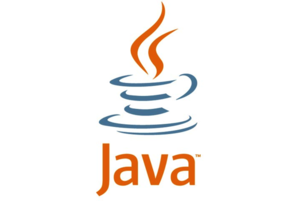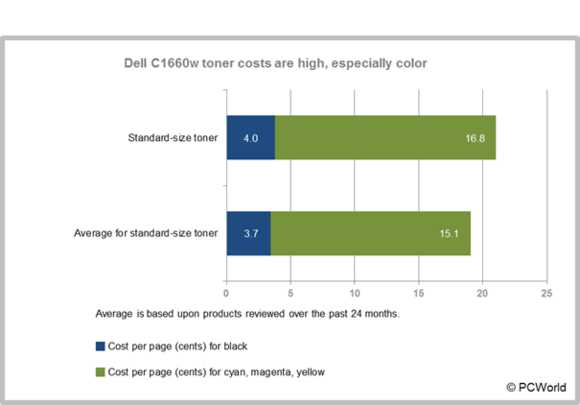Asia is fast becoming the epicenter of the PC market as Chinese and Taiwanese companies challenge the turf occupied for more than a decade by prominent U.S. PC makers Hewlett-Packard and Dell, whose laptop and desktop shipments are stumbling.
Lenovo, Asus, and Samsung are increasing PC shipments at the expense of U.S. companies even as the demand for laptops and desktops slows. Asian companies have taken advantage of low-cost manufacturing capabilities as well as proximity to the component supply chain and burgeoning markets like China to grow faster than their U.S. counterparts, industry observers said.
Sales still short
Demand for PCs has dropped with the emergence of tablets and smartphones, lack of innovation and flagging economies. The PC business at HP and Dell—in first and third place, respectively, for global PC shipments—are struggling as the companies focus on high-margin enterprise offerings. This puts Asian firms, which are developing innovative consumer products, in a better position to lead the volume PC market.

IDC is projecting annual worldwide PC shipment growth of just 2.8 percent year-over-year for 2013, and single-digit growth once again in 2014. This comes after a rough 2012 in which PC shipments fell by 3.2 percent compared to 2011. PC shipments fell for HP and Dell, which were hurt by the weak economies in the U.S. and Europe. Lenovo, Asus, and Samsung bucked the trend by increasing worldwide PC shipments last year, even in the U.S. market.
Meanwhile, there are questions about the future of HP and Dell in the PC business as they try to morph into mini-IBMs with a growing enterprise product portfolio, said Jay Chou, senior research analyst at IDC. The uncertainty could cause HP and Dell customers to move to Lenovo and Asus, who are committed to consumers and PCs, Chou said.
HP in 2011 mulled getting rid of its PC business, and Lenovo is inching closer to become the world's top PC maker. Dell is already de-emphasizing the PC business, and last week announced it would go private, leaving customers with questions about the company's continued interest in desktops and laptops.
Asian vendors climb
In the fourth quarter of 2012, three of the top ten PC makers—HP, Dell, and Apple—were based in the U.S., while the rest had headquarters in China, Taiwan, Korea, and Japan. In the fourth quarter a decade ago, the top three PC makers were HP, Dell, and IBM, but since then the industry has contracted with Taiwanese and Chinese companies involved in key transactions. Lenovo acquired IBM's PC business in 2004, and also Japan-based NEC, which was one of the top five PC vendors in 2002. Acer bought out U.S. vendor Gateway and European vendor Packard Bell. Asus, which made PCs for companies like HP in the past, spun off its assembly business into a firm called Pegatron, and created its own brand of PCs.

There's a big difference between the enterprise and consumer sectors with respect to products and business models, said John Ciacchella, principal at Deloitte Consulting.
To play in the consumer market, where companies like Lenovo are strong, manufacturers need to move volumes of product, while they need to offer services and value to appeal to enterprises, Ciacchella said.
"Lenovo has played economies of scale, they've globalized. They've played the market better than an HP or Dell has," Ciacchella said.
Lenovo also has the natural advantage of proximity to their suppliers as well as to growing markets. Taiwan, Korea, Japan and China are hubs for PC assembly and manufacturing of components like memory, motherboards.
"In the case of Lenovo they've got an indigenous market that's huge," Ciacchella said. "It's still nowhere near saturation."
Consumer focus
Asian PC makers, especially Lenovo and Asus, are aggressively investing in the consumer market, either through acquisitions or through research and development, said Tracy Tsai, an analyst at Gartner.
 Microsoft Surface Pro
Microsoft Surface Pro The Asian companies are devoted to creating a variety of consumer-oriented product lines, including tablets and smartphones, Tsai said. HP and Dell were slow in adapting to the mobile device business, and research and development is focused more on enterprise products for the long term, instead of consumer products that fulfill short-term demand.
Innovations from U.S. PC makers IBM, HP, Compaq, Apple, and Dell drove early PC growth. But PCs have become commodity products and the level of innovation in laptops and desktops has not matched that of tablets. Innovation in PCs is now primarily being driven by chip maker Intel, which hopes to fuel the market with ultrabooks, a new category of thin-and-light laptops with tablet features.
But expensive ultrabooks and a weak user response to Windows 8 have failed to boost the PC market. Microsoft has developed Surface tablets, which the software maker intends to be a starting point for PC makers to develop a new generation of Windows PCs. Early reception to the device, however, raises questions about its future success.

One big exception to the general trend in the U.S. is Apple, which created the tablet market and has committed customers willing to pay a premium for Macs. Apple is bringing back manufacturing jobs to the U.S. In addition, Lenovo will start making tablets and computers in the U.S. There are also some exceptions to the generally positive trend in Asia—Japanese PC vendors like Sony and Fujitsu continue to struggle, while Taiwanese PC maker Acer is floundering after putting too much stock on netbooks and not anticipating the arrival of tablets.
Manufacturing challenge
But it's hard to compete with Asian PC makers on margins, said Kelt Reeves, CEO of Falcon Northwest, which makes laptops and desktops for a specialized audience including gamers.
Mass-market products from Asia are cheaper and with numerous factories available to enable low-cost manufacturing and assembly, Asian companies can make low-margin PCs better than anyone else, Reeves said.
Falcon Northwest's desktops and laptops use high-end components and are typically priced at thousands of U.S. dollars. The company sources motherboards from Asus at a price of US$200 to $400, and gets specialized chassis from Taiwan. The company prefers PC assembly and customer support in the U.S.
"We prefer it U.S.-based, but that keeps the cost a little higher," Reeves said.
 Dell Inspiron 15R 5520
Dell Inspiron 15R 5520 Analysts noted that HP and Dell won't leave the PC market in the short term and will continue to drive revenue and volumes of shipments. But the companies are dependent on Taiwanese manufacturers like Pegatron, Compal, Wistron to build and design products, which indicates that the PC epicenter in some ways has already moved to Asia.
Asia is more competitive at making commodity PCs, but the U.S. is skilled in manufacturing high-end technologies llike microprocessors, said Deloitte's Ciacchella.
In addition, the U.S. could have a fighting chance to retain some PC competency if it becomes increasingly cost-competitive to do business in some parts of the country as companies like Apple and Lenovo bring PC and tablet manufacturing jobs to the country.
A lot of the competitiveness in the U.S. may also depend on Dell retaining its PC unit under the proposed private ownership, which will allow it to execute on its product strategy without having to show the sort of steady quarter to quarter rise in profit that Wall Street demands.
"It's going to be an interesting situation to monitor," Ciacchella said.
Agam Shah covers PCs, tablets, servers, chips and semiconductors for IDG News Service. Follow Agam on Twitter at @agamsh. Agam's e-mail address is agam_shah@idg.com Michael Kan of the IDG News Service in Beijing contributed to the story.
 Linux creator Linus Torvalds
Linux creator Linus Torvalds
 QualysGuard scanning uses Amazon
QualysGuard scanning uses Amazon






 Melissa Riofrio
Melissa Riofrio Facebook and Google blocked access to NBC.com after it was found on Thursday serving up malicious software intended to steal bank account details.
Facebook and Google blocked access to NBC.com after it was found on Thursday serving up malicious software intended to steal bank account details.
 The 2013 Linux Jobs Report (Click image for full view.)
The 2013 Linux Jobs Report (Click image for full view.)  An example of a mobile-phone signal booster
An example of a mobile-phone signal booster 



 Microsoft Surface Pro
Microsoft Surface Pro
 Dell Inspiron 15R 5520
Dell Inspiron 15R 5520


 1) Character creation is a step down memory lane with D&D 2nd edition rules used throughout.
1) Character creation is a step down memory lane with D&D 2nd edition rules used throughout. Combat is a mix of RTS mob management and RPG clickfest.
Combat is a mix of RTS mob management and RPG clickfest. 3) Baldur's Gate leaves plenty of backstory lying around. Be prepared to read.
3) Baldur's Gate leaves plenty of backstory lying around. Be prepared to read.